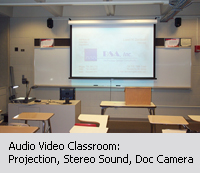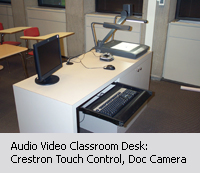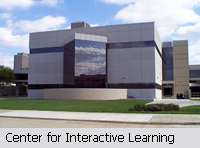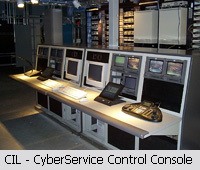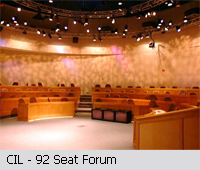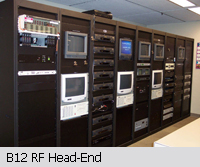Projects >>Education >>Sinclair Community College
Sinclair Community College
Dayton, OH
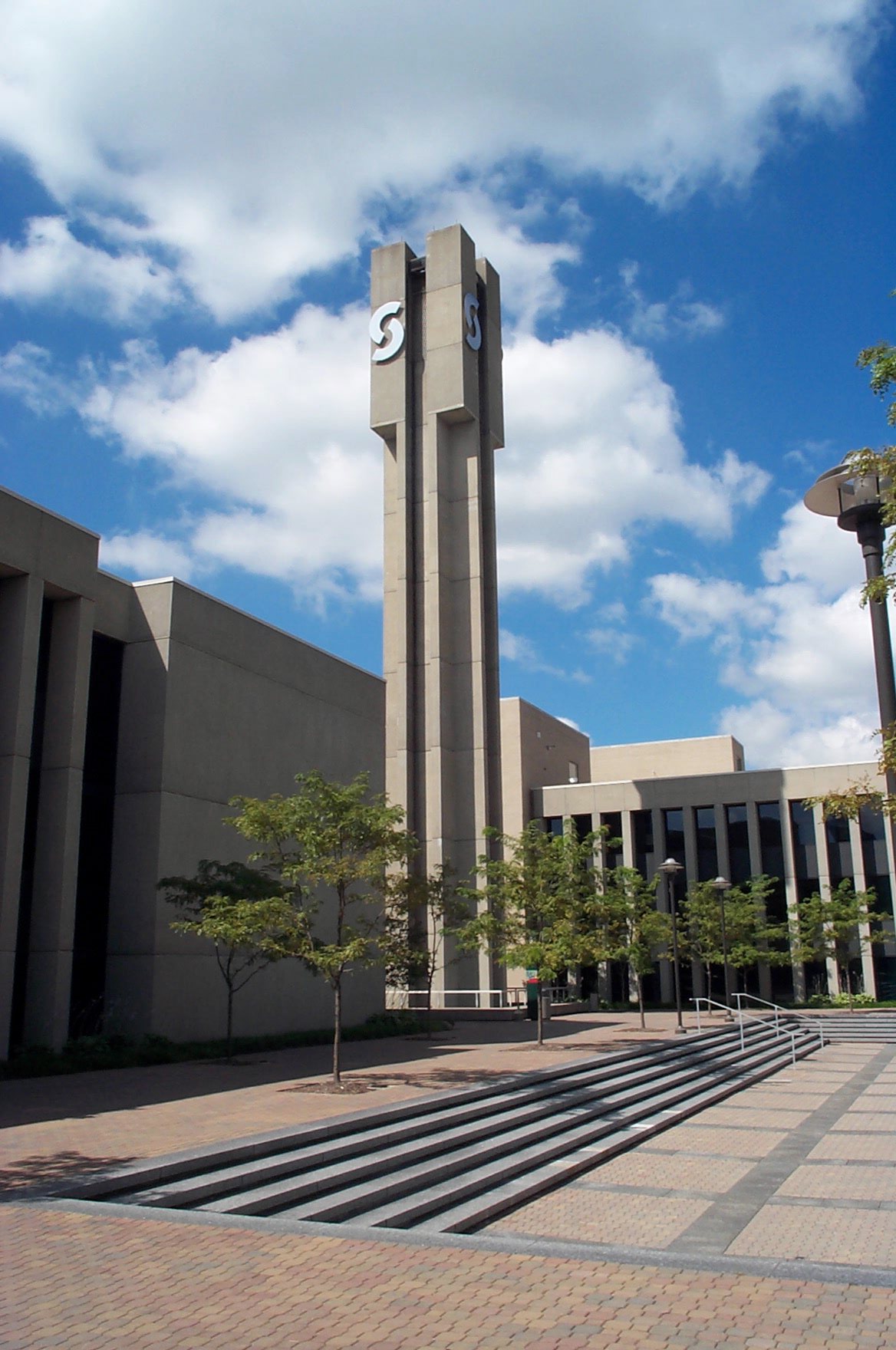
A ten year period as consultant to the 22-building College is marked with work in every building and every element of communication technology. Initially asked to serve as consultant to the Center for Interactive Learning (CIL), DSA was asked to include "bleeding-edge" technology throughout the building that was touted to be the most most technological instructional facility in North America.
The CIL was designed with access flooring in every classroom and an open ceiling to facilitate easy re-structuring of class configuration that was dependent upon the professor's wishes. The building infrastructure was designed to provide video, audio, and data to be routed from anywhere to anywhere through a "cyber control" created in the middle of the building vertically and horizontally. The building featured a virtual reality surgical suite, the first serial digital television in each class, large-screen projection and stereo sound in each classroom, and gig-to-the-desk for computing.
DSA also designed the Forum, a 92-seat circular tiered classroom with three 9'x12' images that could be changed to two 27'x12' images. The forum also featured fiber-to-the-desk, 7-channel Dolby® digital surround sound, and computerized lighting control. The instructor has the flexibility of moving the lectern to three different locations with floor-box connectivity at each with software activation. Five P/T/Z cameras and 4-zone voice lift complements the video teleconferencing capability of the room. Each seat is equipped with microphone and individual lighting.
Following the completion of the CIL, DSA was asked to assess the campus in all elements of technology. A seven-month study was undertaken by DSA to determine (1) the status of the general cabling infrastructure, the capabilities of each classroom, the functionality of administrative and instructional networks and (2) the needs and wants of the college administration, faculty and staff. The research included individual interviews, forums, focus groups, and interactive working sessions. The report submitted included 332 30"x42" drawings illustrating the condition of the campus and a voluminous narrative detailing the findings of the research.
After the administration studies the report for several months, DSA was asked to design a totally new campus-wide infrastructure, a new campus LAN/WAN, and new instructional delivery systems for classrooms. Scope of work included the demolition and removal of all existing cable, the creation of new MDF/IDF rooms in all buildings, a new network center and the installation of all systems. The work was conducted in phases and allowed administrative and instructional work to continue unabated.
As there was no plenum space in seventy-five percent of the buildings, an innovative approach was undertaken to create physical infrastructure on the roofs of the buildings with vertical transition to the interior of buildings that did not have plenum space.
NOTE: The campus was master designed by the renowned architect Peter Capone beginning in the late 1960's who continued to serve as campus master architect throughout this period. All buildings are linked via enclosed bridges or underground tunnel. A central three-story, 2,200 feet long parking structure provides covered parking from which entry to the campus is provided via covered bridges.
Each building was provided with a weather-proof enclosure from which entry to each building's IDF was accomplished. DSA also designed a physical and visible horizontal cable delivery device that was approved by the College, but vetoed by the campus architect on the grounds that, although it was physically aesthetic and innovative, it was in conflict with the vertical design elements incorporated within each building and therefore would not be approved.
DSA was responsible for the design of all work including physical modifications, electrical, and electronic. Further, DSA was responsible for the solicitation of bids, the award of contracts, the phased scheduling of all work, processing of associated paper, coordination of check-out, start-up, and design compliance and processing of contractor forms.
Following completion of the infrastructure and new data networks, work also was undertaken and completed for new instructional deliver systems for classrooms. Over two-hundred classrooms were provided with new systems including projection system, stereo sound, VCR/DVD, and document camera source equipment. The Cyber-Control located in the CIL was modified to include campus control software that monitors each classroom and provides for unified technical support.
The campus-wide RF distribution system was completely redesigned and moved from a coax network to a fiber optic backbone that provides channels 2-99 to all sections of the campus.
During supplemental projects, DSA designed and supervised the installation of new sound systems for the campus auditorium and athletic field house. DSA also was asked to review the campus security system and make recommendations for its improvement. A study of all camera locations was undertaken and work accomplished to add to move cameras.
In short, all design, development of project documents, and installation supervision undertaken by DSA amounts to slightly more the $20 million. The general mandate was to create an environment that would support all current administrative faculty, staff, and student activities and accommodate new developments into the twenty-first century. The mandate was fulfilled.

